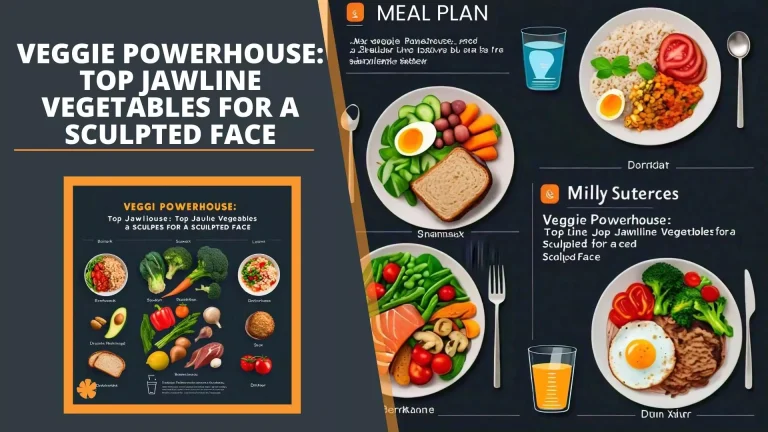Exercises for Quick Weight Loss: Your Ultimate Guide
Are you looking to shed those extra pounds and achieve your weight loss goals quickly? Incorporating the right exercises into your routine can accelerate fat burning, boost metabolism, and help you achieve rapid results. From high-intensity workouts to strength training and cardio, here are some of the most effective exercises for quick weight loss.
Effective Exercises for Quick Weight Loss
1. Squats: Building Lower Body Strength and Stability

Form and Technique:
Squats are performed by standing with feet shoulder-width apart, lowering your hips back and down as if sitting into an imaginary chair, and then pushing through your heels to return to the starting position. Proper form is essential to prevent injury and maximize results.
Variations and Progressions:
To add variety to your squats routine and challenge different muscle groups, try variations such as sumo squats, jump squats, and Bulgarian split squats. You can also increase resistance by using weights or incorporating squat jumps for an added cardiovascular boost.
2. Burpee: A Full-Body Fat-Burning Exercise

Execution and Benefits:
Burpees involve a combination of squats, pushups, and jumps, making them a highly effective exercise for targeting multiple muscle groups and burning calories. They can be performed anywhere with no equipment required, making them a convenient choice for quick, efficient workouts.
Intensity and Modifications:
To increase the intensity of your burpee workout, focus on performing each repetition with speed and explosiveness. You can also modify the exercise to suit your fitness level by eliminating the pushup or reducing the number of repetitions.
3. Pushup: Strengthening the Upper Body and Core

Proper Form and Alignment:
Begin in a plank position with hands shoulder-width apart, lower your body until your chest nearly touches the floor, and then push back up to the starting position. Engage your core throughout the movement to maintain stability and prevent sagging or arching of the back.
Progressions and Variations:
Once you’ve mastered the basic pushup, challenge yourself with variations such as wide-grip pushups, diamond pushups, and decline pushups. You can also increase resistance by wearing a weighted vest or elevating your feet on an unstable surface.
4. Skipping: Cardiovascular Conditioning and Coordination

Technique and Rhythm:
Skipping, also known as jump rope, is an excellent cardiovascular exercise that improves coordination, agility, and footwork. Start with a basic two-foot jump and gradually progress to more advanced techniques such as double unders, criss-crosses, and high knees.
Benefits and Fat Burning:
Skipping is a high-intensity workout that can torch calories and elevate your heart rate in a short amount of time. It’s also low-impact, making it suitable for individuals of all fitness levels and ages.
5. Deadlifts: Building Strength and Power in the Lower Body and Back

Technique and Safety:
Deadlifts involve lifting a barbell or set of dumbbells from the ground to a standing position, focusing on hinging at the hips while keeping the back flat and core engaged. Proper form is crucial to prevent injury and maximize muscle engagement.
Muscle Engagement and Variations:
Deadlifts primarily target the posterior chain muscles, including the glutes, hamstrings, and lower back. Variations such as Romanian deadlifts, sumo deadlifts, and single-leg deadlifts can target different muscle groups and add variety to your workout routine.
6. Kettlebell Swings: Dynamic Exercise for Full-Body Conditioning

Swinging Technique and Momentum:
Kettlebell swings involve swinging a kettlebell between your legs and then forcefully driving your hips forward to propel the kettlebell to chest level. Focus on generating power from the hips and maintaining a strong core throughout the movement.
Benefits and Functional Strength:
Kettlebell swings are an excellent exercise for building explosive power, improving cardiovascular fitness, and enhancing overall strength and endurance. They also target the posterior chain muscles and promote hip mobility and flexibility.
7. Lunges: Sculpting Stronger Legs and Glutes

Proper Form and Alignment:
Lunges are performed by stepping forward with one foot and lowering the body until both knees are bent at a 90-degree angle, ensuring that the front knee does not extend past the toes. Keep the chest upright, core engaged, and back straight throughout the movement.
Muscle Engagement and Variations:
Lunges primarily target the quadriceps, hamstrings, and glutes, helping to improve lower body strength, balance, and stability. Experiment with variations such as reverse lunges, walking lunges, and lateral lunges to target different muscle groups and add variety to your workout routine.
8. Mountain Climbers: Dynamic Core and Cardio Exercise

Execution and Tempo:
Begin in a plank position with hands directly beneath your shoulders and core engaged. Alternate bringing each knee towards the chest in a running motion while maintaining a fast tempo. Keep your hips low and core stable throughout the movement.
Benefits and Intensity:
Mountain climbers are a highly effective exercise for targeting the core, shoulders, and cardiovascular system. They can be performed as part of a high-intensity interval training (HIIT) workout to increase calorie burn and elevate heart rate, making them ideal for quick weight loss.
9. Running: Cardiovascular Endurance and Calorie Burning

Technique and Cadence:
Running is a popular and accessible form of cardiovascular exercise that can be performed outdoors or on a treadmill. Focus on maintaining a comfortable pace, landing softly on the midfoot, and swinging your arms in a natural rhythm to propel yourself forward.
Training Methods and Progression:
Whether you’re a beginner or seasoned runner, there are various training methods you can incorporate to improve endurance, speed, and efficiency. These include interval training, tempo runs, long slow distance (LSD) runs, and hill repeats, each targeting different aspects of running performance.
10. Cycling: Low-Impact Cardio Option for All Fitness Levels

Bike Setup and Posture:
Cycling is a low-impact exercise that provides a great cardiovascular workout while minimizing stress on the joints. Ensure your bike is properly adjusted to your height, maintain a neutral spine, and keep your shoulders relaxed while pedaling.
Terrain and Intensity:
Whether you prefer cycling outdoors or using a stationary bike indoors, you can vary the terrain and intensity of your rides to challenge different muscle groups and energy systems. Experiment with hills, sprints, and endurance rides to improve strength, speed, and endurance.
11. Interval Training: Maximizing Calorie Burn and Fitness Gains

Structure and Intensity:
Interval training alternates between periods of high-intensity exercise and periods of rest or low-intensity recovery. This approach maximizes calorie burn, boosts metabolism, and improves cardiovascular fitness in a shorter amount of time compared to steady-state cardio.
Protocols and Work-to-Rest Ratios:
There are various interval training protocols you can follow, such as Tabata, HIIT, and Fartlek, each with its own work-to-rest ratios and intensity levels. Experiment with different protocols to find the one that best suits your fitness goals and preferences.
12. Swimming: Low-Impact Total-Body Workout

Technique and Stroke Variety:
Swimming engages the entire body, providing a full-body workout that is gentle on the joints. Whether you prefer freestyle, breaststroke, backstroke, or butterfly, swimming offers versatility and can be tailored to suit your fitness level and goals.
Cardiovascular Benefits and Calorie Expenditure:
Swimming is an excellent cardiovascular exercise that improves lung capacity, endurance, and overall fitness. It also burns a significant number of calories while toning muscles and improving flexibility, making it an ideal option for rapid weight loss.
13. Yoga: Enhancing Strength, Flexibility, and Mind-Body Connection

Asanas and Flow:
Yoga encompasses a variety of poses, or asanas, that target different muscle groups and promote strength, flexibility, and balance. Flowing sequences such as Vinyasa or Power Yoga increase heart rate and build endurance, while restorative poses focus on relaxation and stress relief.
Benefits for Weight Loss and Well-Being:
In addition to its physical benefits, yoga promotes mindfulness, stress reduction, and emotional well-being, which are important factors in successful weight loss. Regular practice can help improve body awareness, reduce cravings, and foster a positive relationship with food and exercise.
14. Barbell Row: Strengthening the Back and Core Muscles

Proper Form and Technique:
Barbell rows target the muscles of the upper back, including the latissimus dorsi, rhomboids, and traps, as well as the biceps and core. Maintain a neutral spine, engage your core, and pull the barbell towards your lower ribcage while keeping your elbows close to your body.
Muscle Engagement and Progressions:
As you become stronger, you can gradually increase the weight lifted and experiment with different grip widths and hand positions to target specific areas of the back. Barbell rows can be performed with an overhand or underhand grip, as well as with a wider or narrower grip to vary the stimulus.
15. Battle Ropes: Dynamic Cardio and Strength Workout

Wave Techniques and Patterns:
Battle ropes are thick, heavy ropes that can be used to perform a variety of dynamic exercises, including waves, slams, and circles. These movements engage the arms, shoulders, back, and core, while also elevating heart rate and burning calories.
Benefits and Applications:
Battle ropes are highly versatile and can be incorporated into circuit training, HIIT workouts, or as a standalone conditioning exercise. They improve grip strength, coordination, and endurance, making them an effective tool for enhancing overall fitness and promoting rapid weight loss.
In conclusion
Incorporating a variety of exercises into your routine is key to achieving rapid weight loss and improving overall fitness. From high-intensity interval training to strength training, cardio, and flexibility exercises like yoga, each workout offers unique benefits for burning calories, building strength, and boosting metabolism. By combining different modalities and staying consistent with your workouts, you can maximize results and reach your weight loss goals more efficiently. Remember to listen to your body, stay hydrated, and consult with a fitness professional if you have any concerns or limitations. With dedication and perseverance, you can transform your body and experience the benefits of a healthier, fitter lifestyle. Start your fitness journey today and discover the transformative power of exercise!







I’m always impressed by the quality of your posts. Keep up the great work!
Thank you so much for the kind words, David! I’m glad to hear you’re finding the posts helpful. Looking forward to staying connected and supporting each other’s work!